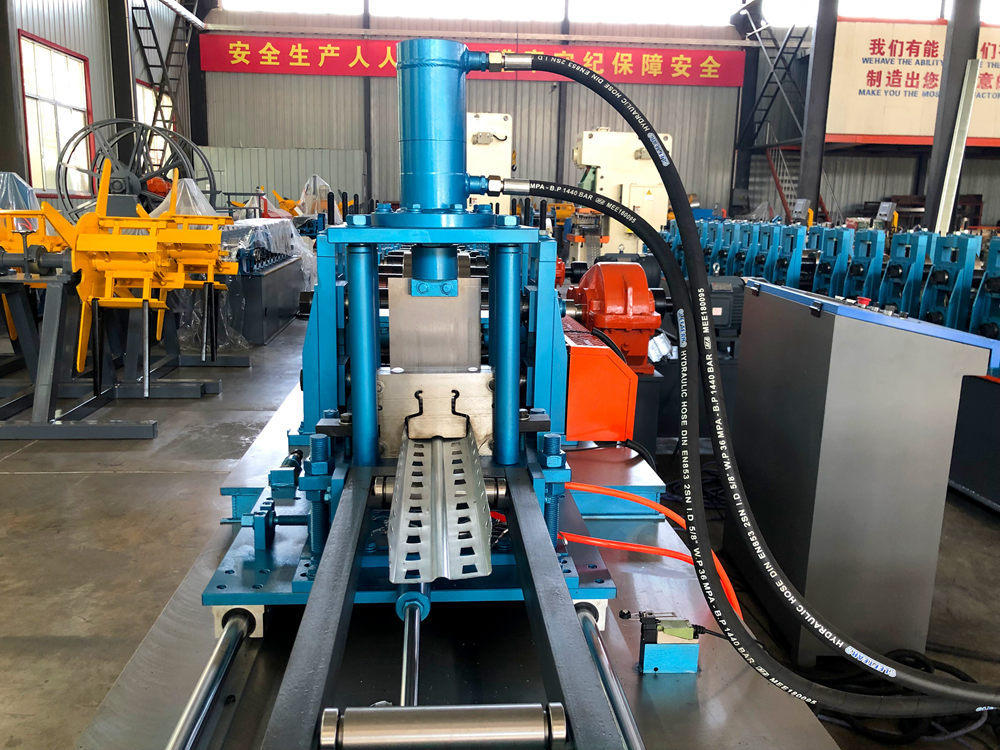
Understanding Corrugated Sheet Forming Machines An Overview
Corrugated sheet forming machines play a pivotal role in the manufacturing industry, particularly in the production of packaging materials and structural components. These machines are designed to create corrugated sheets, which feature a series of alternating ridges and grooves. This unique design not only provides exceptional strength but also lightweight properties, making corrugated sheets ideal for various applications such as packaging, construction, and more. In this article, we will delve into the working principle, types, advantages, and applications of corrugated sheet forming machines.
Working Principle
At the heart of a corrugated sheet forming machine is its ability to transform flat sheets of material, typically metal or plastic, into a structurally robust corrugated form. The process generally begins with feeding a flat sheet into the machine, where it passes through a series of rollers that create the desired corrugation pattern. These rollers are meticulously designed to apply pressure at specific intervals, forming ridges and valleys. Depending on the machine, additional processes such as cutting, trimming, and folding may be integrated to produce finished sheets of varying sizes and configurations.
The automation in modern corrugated sheet forming machines ensures consistency and high production speeds, minimizing manual intervention. Advanced control systems allow operators to adjust parameters such as speed, temperature, and pressure, enabling customization according to specific product requirements.
Types of Corrugated Sheet Forming Machines
There are several types of corrugated sheet forming machines, each designed for different materials and applications
1. Metal Corrugated Sheet Forming Machines These machines are specifically built to handle metal sheets, widely used in construction for roofing and wall cladding. They can produce sheets from materials such as steel or aluminum, which are then often coated for enhanced durability.
2. Plastic Corrugated Sheet Forming Machines Designed for the production of plastic sheets, these machines cater to industries that require lightweight and weather-resistant materials, such as agriculture and signage.
3. Cardboard Corrugated Sheet Forming Machines These are primarily used in packaging industries to produce corrugated cardboard. The machines generate sheets that are then converted into boxes and other packaging solutions.
Advantages of Corrugated Sheet Forming Machines
The use of corrugated sheet forming machines offers numerous advantages

- Strength and Durability The engineered structure of corrugated sheets provides high strength-to-weight ratios, making them ideal for various applications without adding excessive weight.
- Cost-Effectiveness The production of corrugated sheets is often more economical than solid sheets, especially when considering the material savings and transportation costs due to their lightweight nature.
- Versatility Corrugated sheets can be manufactured in a multitude of sizes, shapes, and material types, making them suitable for a wide range of applications.
- Eco-Friendly Options Many manufacturers are now creating machines that can work with recycled materials, promoting sustainability and reducing waste.
Applications of Corrugated Sheets
Corrugated sheets produced by these machines find applications across various sectors
- Construction In the construction industry, corrugated metal sheets are used for roofing and siding due to their weather resistance and structural integrity.
- Packaging Corrugated cardboard is the backbone of the packaging industry, providing a lightweight yet strong material for shipping products ranging from electronics to food items.
- Signage Durable plastic corrugated sheets are often used for outdoor signage due to their resistance to fading and physical damage.
- Agriculture Plastic corrugated sheets are utilized in greenhouses and for protective coverings due to their ability to allow light transmission while providing shelter from the elements.
In conclusion, corrugated sheet forming machines are essential for producing versatile, durable, and cost-effective materials that serve a multitude of industries. As technology advances, these machines continue to evolve, leading to increased efficiency and expanded capabilities in manufacturing corrugated sheets. The ongoing innovation in this field is likely to further enhance productivity and sustainability, driving growth in the global market.